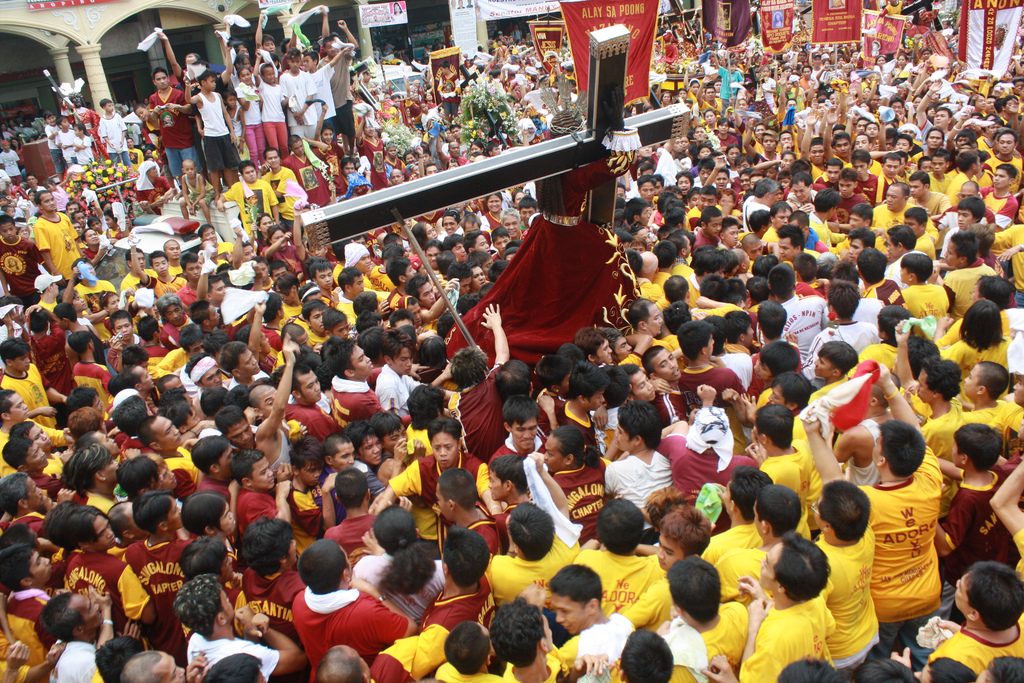Understanding Filipino culture is the second longest of all my Survival Tips. This is because culture really is such a complex subject, especially in the Philippines. Understanding the culture of the Philippines is vitally important if you wish to survive here for any length of time. Let’s take a look now at the major components of Filipinos culture.
Understanding Filipino Culture
The culture of Filipino people really is impossible to understand completely. Despite the fact I first came to the Philippines in 1997, and have lived here since 2003, I’m constantly challenged by the culture. Just when you think you have it worked out, there is always something that will happen that will leave you feeling like a fish out of water. Like every other country on this planet, there are do’s and dont’s and the Philippines is no different. Understanding the culture of this country is one of the first steps towards making your experience that much more enjoyable.
Culture Shock
What I will cover in this Survival Tip is understanding Filipino culture, the way they communicate, the way they think, and why they do what they do. If one understands this, it goes a long way toward helping make your relationship with Filipinos that much more enjoyable. Ultimately, this will enhance your chances of survival in this country.
As mentioned, although I have been living here for a prolonged period of time, and have a fair grasp of the culture, I still very much class myself as a guest in this country. I strongly believe it’s important for all foreigners to do the same, whether or not you live here. Despite the length of time I have been living here, I still see things on a daily basis that shock me. It really is a country of contrasts and paradoxes that does take a lot of getting used to. It can be an immensely rewarding country, but can also frustrate the hell out of you. However, like any place you visit, you must respect the local law, culture and customs, whether you agree with them or not.

Just about every day, despite living here since 2003, I still see things that shock me and leave me gobsmacked. Being a culture influenced by the US and Spain, you can get lulled into a false sense of security thinking that Filipinos are very similar to westerners. On the surface, this may be true but at their core, they are still very much Asian and will still do things that as a foreigner, seem to defy logic.
As we know from reading the Survival Tip on the history of the Philippines, Filipinos have developed a very resilient attitude which I believe is one of their greatest strengths. As a result, they have also become very determined and stubborn, which can be one of their greatest weaknesses. You can see here that we have a scale of extremities to work from. So how does understanding this help you to survive in this country?
Filipino Culture
When people think of Asian culture, they think of ancient temples, mythological creatures, colourful clothing with intricate designs, hieroglyphics and exotic food. While this may be true, I want to focus more on the Filipino people and their character traits. There is no doubt they have a pretty unique and distinct blend of Asian and Western culture. This has been heavily influenced by their history.
Why do Filipinos do certain things a certain way that defies logic or explanation? Why do they have different standards and ethics? Why do they have different priorities? Why do they speak English, yet don’t fully comprehend what I’m saying? Once again, I could write volumes upon volumes sharing my experiences and theories and opinions to do with Filipino culture. However, for the purpose of this Survival Tip, I will keep it relatively simple and stick to the main concepts.
When looking at the Filipino culture of today, and what it means for first-time visitors to the country, I think it stems back several thousand years. Like most countries, the population was predominantly indigenous and was very much a tribal, clan-based, village type set-up. Even in today’s Philippine society, you can see that this is still very much part of the population’s psyche. With an estimated 120 ethnic groups making up the population, you can see that there isn’t just one type of Filipino. There are literally over one hundred different types of Filipino. This in itself leads to clashes and misunderstandings which complicates things even further for us foreigners.

Most Filipinos will speak a dialect as well as speaking Tagalog, (the national language). This is because most of them were born in a province outside of Manila. Or, they might be a first generation Manileño. With 175 different dialects and languages here, communicating with Filipinos can be a real challenge even though they can also speak English.
In my experience, I think one of the main influences on Filipino culture is their language. This is made apparent through the multitude of languages and dialects spoken in this country. It is estimated that there are between 120 to 175 languages in the Philippines. This can depend on the method of classification (source: Wikipedia). The national language of the Philippines is called Tagalog (or Filipino). This is a combination of the indigenous language with its roots in Malay, which has then been heavily influenced by Spanish. Thankfully, just about all Filipinos can speak English (thank you America!), which is a massive bonus as a foreigner.
So going back to culture, we can see that each of these 120 different groups of Filipinos naturally have their own language or dialect. Therefore, they also have their own nuances, beliefs, mannerisms etc. However, despite the cultural divide among the one hundred plus million Filipinos that live here, there are a lot of common cultural traits. This is what I will focus on, as this typifies the average Filipino.

This is a reconstruction of a typical Filipino house known as “Bahay Kubo “. When one thinks of the tribes and clans that make up the Philippines, images like this spring to mind. This really symbolises Filipino culture.
One of the more important elements of Filipino society to understand is that like most of Asia, they have a very hierarchical society. This is built upon respect for elders and people in positions of authority. This is quite different from western society in general, where there is more equality across all levels, and even genders.
You will often hear a Filipino call you Sir or Ma’am. At first, I thought this was because I was a foreigner. However, over time, I released they even call each other Sir or Ma’am. This is practised as a sign of respect, particularly towards someone older or in a position of authority. When this is coupled with their cheerful and friendly countenance, it can be a little overwhelming. It does take a bit of getting used to, especially when you walk into a restaurant or a convenience store. So be prepared!
A lot of this behaviour is driven purely by their eagerness to be friendly and to make you happy. I have never met a race of people friendlier than Filipinos. They really do strive so hard to smile and make you smile. When you consider their history with hundreds of years of Spanish colonization, decades of American occupation, and the Japanese trying to take the country over during the Second World War, it would be understandable if Filipinos developed a negative attitude towards anybody that wasn’t a native of their land. Everywhere you go, even the poorest of poor Filipinos still manage to raise a genuine smile. This really helps to put things into perspective, especially if you’re having a bad day. When you consider the tough times that Filipinos have been through, this is a very remarkable trait.

Sure, when there is a camera around, Filipinos love getting their photo taken. However, even the poorest of the poor still manage to raise a smile. This photo was taken in Quarry, Sanpao, on the outskirts of Davao where we did some charity work. The poverty in this area is absolutely terrible, yet people still smile and are easily amused.
This can extend even further to friendship with strangers. Filipinos really do welcome you into their homes even if you are a stranger. They are always happy to share their food and their good times and open their hearts up to you. You straight away become part of the family and are made to always feel welcome. I can honestly say I don’t think I have experienced this type of open friendliness with any other nationality or culture. It really is something that Filipinos can be proud of, and something that I think defines their culture.
Filipino Time
One of the things I really like about Filipinos is that they are generally very laid back. They don’t really stress out, which I believe is a strength, but is often considered by Westerners as a fault. As a result, the concept of time is very different for Filipinos compared to the west. This is often referred to as “Filipino Time”. While it can sound like a cop-out, it really is a standard that is pretty much ingrained in their culture. Whether you like it or not, their concept, or appreciation, of time, is vastly different to westerners.
It took me a while to work out why this is, but I believe it comes right back to the language. In English, when we ask “what’s the time?”, we are a little more specific, even within blocks of 15 minutes. For example, quarter past 4, half past 4, quarter to 5. However, the Filipino translation of “what’s the time?” is “anong oras?”, which is taken from Spanish. The direct translation for “anong oras?” is “what hour?”. To me, I think it explains why Filipinos can be one hour late, and it doesn’t bother them. I believe this is because, in their mind, they are within the hour. Unfortunately, most of the time, they are on the wrong side of the hour. Once again, I am generalizing, but it is quite a common trait among Filipinos to be unpunctual.
Saving Face
In Asia, the concept of “saving face” is a such an intrinsic element to the culture. This is none more so than here in the Philippines. In the Philippines, saving face can also be considered as having a sense of shame, or kahihiyan, as it is known in the local language. This is basically a sense of trying to avoid bringing embarrassment or shame to one’s self or even their family and friends. This is often why Filipinos try their best to avoid confrontation. This can often be misinterpreted as them being shy. This is such a strong element in Filipino culture and needs to be understood when dealing with Filipinos at any level.
There will be many occasions when you will ask a Filipino a question and they basically don’t give you a straight answer. Or worse still, don’t answer you at all. This may come across as them being shy, or even rude. However, a lot of the time, it’s because they don’t know the answer. As a result, they don’t want to embarrass themselves by actually letting you know that they don’t know the answer.
Filipinos are generally very helpful and want to assist you wherever and however they can. However, if they can avoid speaking in-depth English to a foreigner, that is naturally the path they will choose. So this issue really is not so much about understanding you. It is more about how they will respond in English, at least comprehensively. This doesn’t mean they aren’t able, but if you put yourself in their shoes, and you had to speak to them in Filipino, what would be your choice? When Filipinos feel they are confronted by a situation in which they need to speak fairly deeply in English, they refer to it as a “nosebleed”. This means that speaking in English is hurting their brain so much, it causes a nosebleed.

Kahihiyan, or saving face, is when Filipinos feel a sense of shame. This shouldn’t necessarily be taken the wrong way as Filipinos do have strong pride and don’t want to shame themselves by letting you down. However, it can also lead to stubbornness which is when it can be quite challenging to deal with.
Filipinos actually mock themselves in this situation and it’s quite amusing seeing how humble they are about this awkward situation. There have been numerous occasions where I have been speaking to a Filipino and I have thought that their English was actually very good. However, they can become very self-conscious when speaking to a foreigner. This leads to them clamming up and jokingly claiming they have a “nosebleed” if they are trying to respond in English. They usually won’t say this to you, but if they are with other Filipinos, they will mention it in Tagalog and they all end up having a chuckle.
This can be rather frustrating, especially in a situation in which you require an immediate answer, but it’s very important not to lose your cool and express your frustration by shouting or becoming overly animated. Firstly, as I mentioned earlier, we are guests in this country so if Filipinos can’t understand us, that’s actually our problem, not theirs. Secondly, as Filipinos are stubborn in nature, you are even more unlikely to get the outcome you want by making a scene. Filipinos have a strong sense of pakikisama (fellowship, camaraderie), and really just want to be helpful and friendly. This is where patience is an absolute priority or things can unravel pretty quickly.
One of the things I often advise newcomers to the country is to keep your expectations relatively low for just about everything, that way, you will avoid disappointment. Then when things do go your way, consider it to be a bonus. This does happen, but don’t expect it at every turn. In a developing country, there can be a lot of inefficiencies, so you can’t expect everything to work properly or for things to happen as quickly as you would expect in your homeland.
Religion
Religion in Filipino culture cannot be understated. It would be totally remiss for me to not make a small mention of it here in this section. As the Philippines was colonized by Spain for 377 years, it’s no wonder that religion is the cornerstone of Filipino culture. This really is where west meets east with the Philippines being the only Asian country that is officially Catholic.
This can be a surprising revelation (pardon the pun) for newcomers to this Asian country. Most people find themselves asking “what, an Asian country that can speak English and is also Catholic?”. Separation of church and state isn’t as clearly defined in the Philippines as in other Catholic countries, so it’s important to understand this. This is no divorce in the Philippines and this is arguably due to religious intervention. During Easter or Holy Week as it is referred to here, some devotees are actually nailed to crosses as part of a real-life reenactment of the crucifixion. This just goes to show how fanatically religious Filipinos are.

The Procession of the Black Nazarene happens around January 4 each year and involves the carrying of a centuries-old icon of Jesus Christ through the streets of Manila. Worshipers almost crush each other as they climb over each other to kiss, touch, or rub bits of cloth on the statue. The Black Nazarene is an ebony statue of Jesus Christ brought to the Philippines in 1606 and is believed to have miraculous powers.
I’m not going to go on too much further about religion, as I could literally write an entire book on this subject and the ramifications it has on this country alone. However, it’s a point worth raising for newcomers so they can understand why the Philippines, and its people, is the way it is. It’s undeniable that religion plays a massive role in this.
Superstitions
Naturally being fanatically religious, Filipinos are very superstitious. Filipinos have dozens of superstitions which are almost worthy of an entire book on their own. Once again, I don’t want to go into too much detail but I do need to point out the significance of number 13. Number 13 is particularly daunting for Filipinos. This can actually have practical implications for you so it’s worthy of pointing out.
If you find yourself looking for a 13th floor in a condo or office building, you won’t find it! Or if you are looking for a house numbered 13, forget looking for that too. You also won’t find 13 people sitting at a dining table either. Anything to do with 13 is majorly superstitious in the Philippines (and most of Asia also). One other thing you will notice, not that this is particularly superstitious, just different, is that Filipino buildings call the ground floor, the first floor. Just something to be aware of, particularly if you are an Aussie :). For more on Filipino superstitions, please read this article.
So that brings us to end of our cultural Survival Tip. I hope you found this useful and that it will help you in your quest for survival in the Philippines. For the next survival tip on Dealing With The Philippines Population, please click Survival Tip #4 to read more. If you missed the previous survival tip on Understanding Philippines History, click Survival Tip #2 to read more. If you have any comments or experiences you would like to share about the culture of the Philippines, please feel free to leave your comments below. I would love to hear from you.
Philippines Fun Fact:
Filipinos observe the world’s longest Christmas season. It begins with the playing of carols in September and officially ends in January with the Feast of the Three Kings. As part of the festivities, they celebrate Simbang Gabi, or Night Mass, where Catholics attend nine services in a row leading up to Christmas Eve. If a person attends all nine masses, it is said their wish will be granted. Filipinos’ Christmas feasts are called Noche Buena and compare to America’s Thanksgiving (courtesy of https://www.factretriever.com/philippines-facts).


